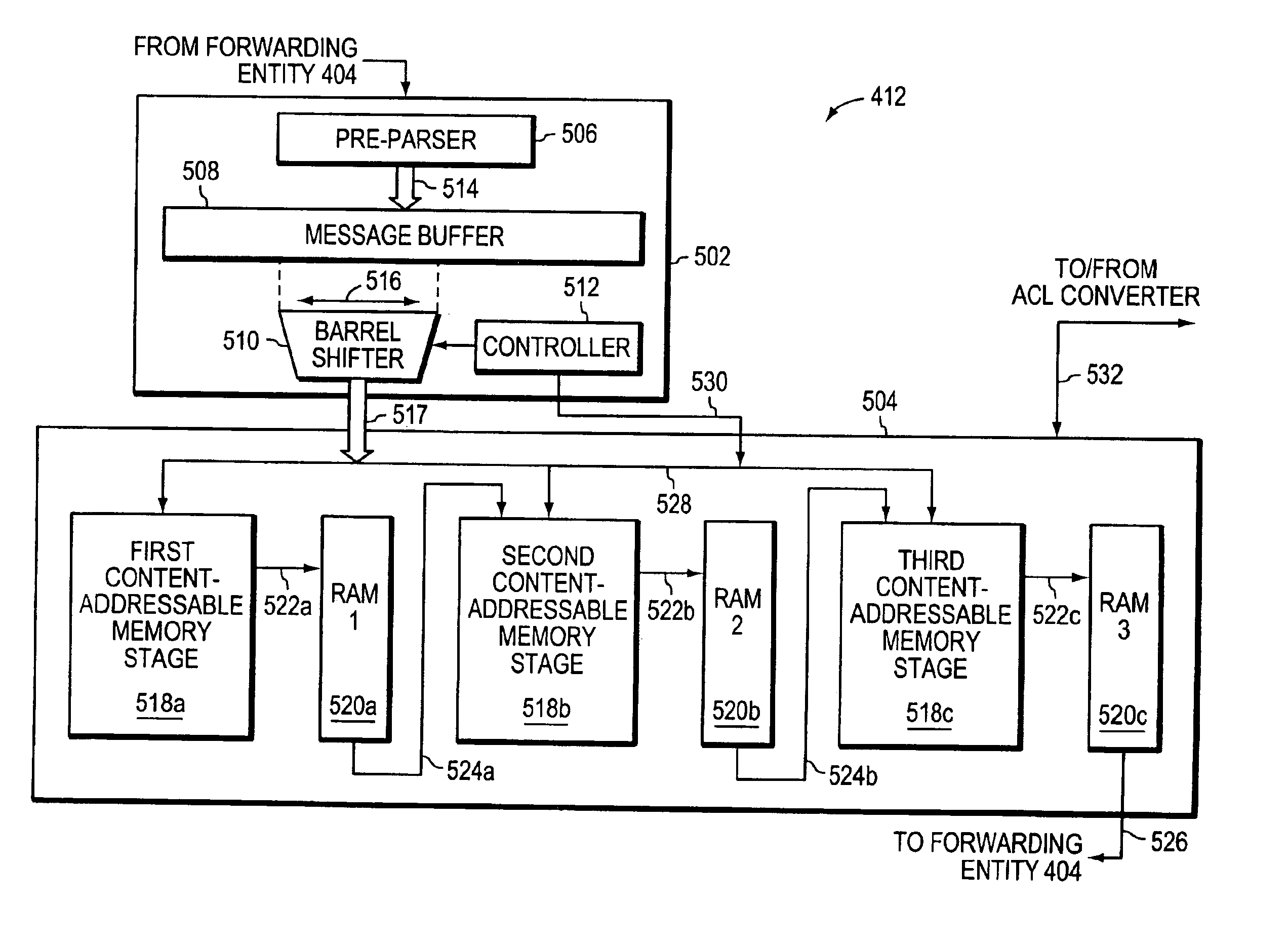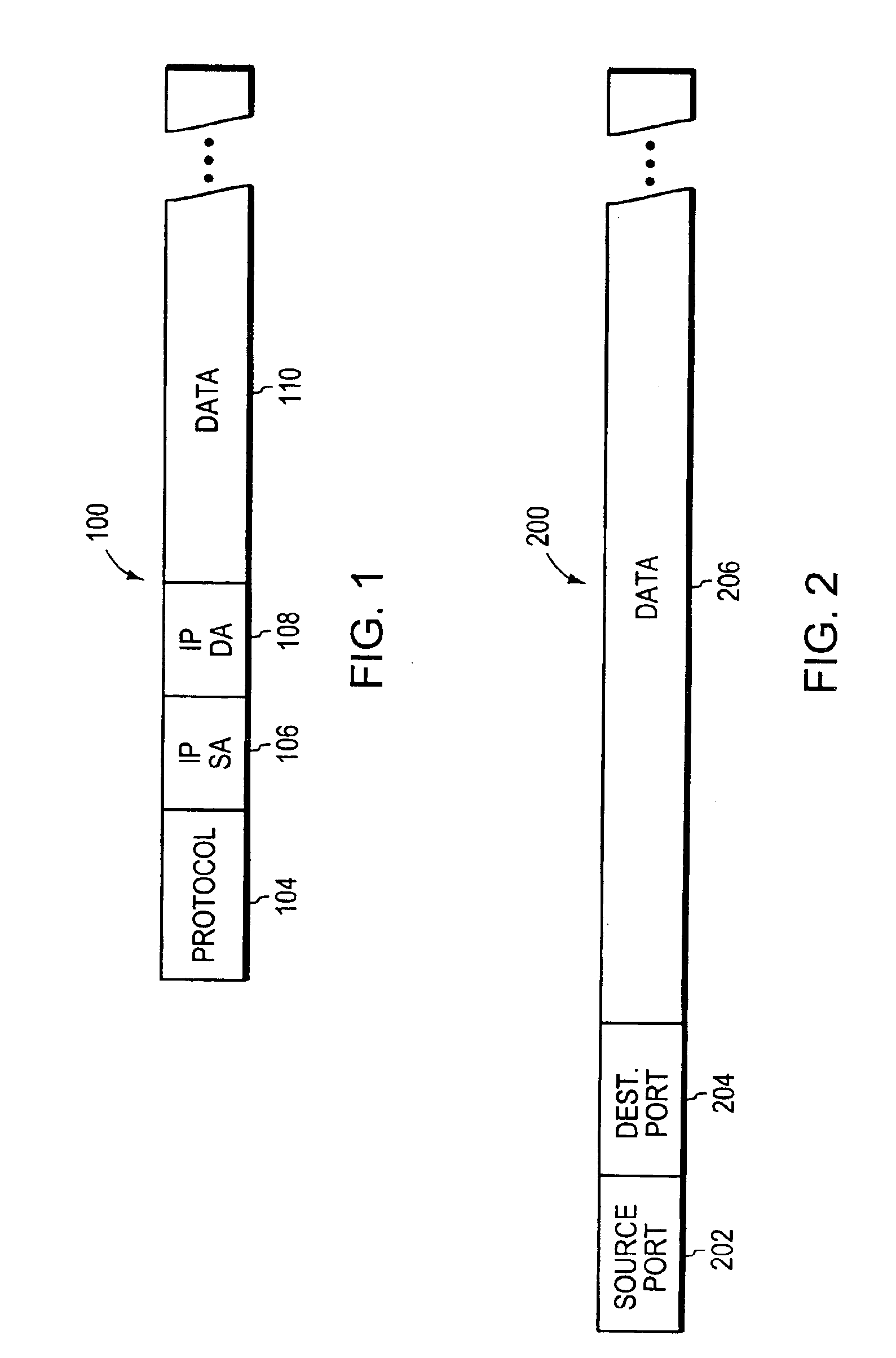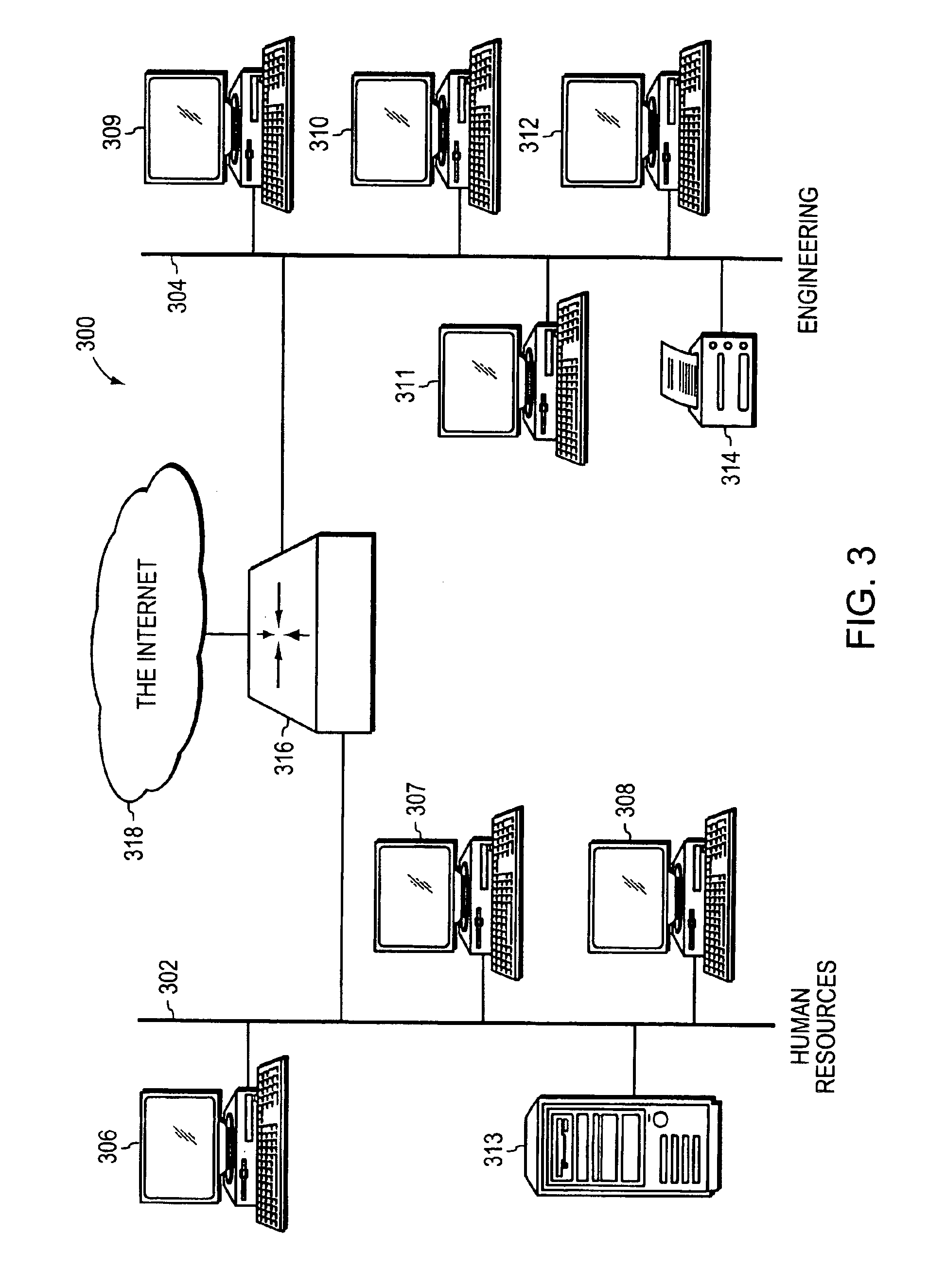Information searching device
a technology of information searching and information, applied in the field of information searching devices, can solve the problems of significant degradation of the performance of the intermediate device, degradation of performance, and likely to reach unacceptable levels, and achieve the effect of reducing the overall power consumption
- Summary
- Abstract
- Description
- Claims
- Application Information
AI Technical Summary
Benefits of technology
Problems solved by technology
Method used
Image
Examples
Embodiment Construction
. 3 is a highly schematic block diagram of a computer network 300. Network 300 includes a plurality of local area networks (LANs), such as LAN 302 and 304, each of which may be associated with a different department of an enterprise, such as the human resources and engineering departments of a company. A plurality of end stations, such as end stations 306-312, and servers, such as servers 313 and 314, may be coupled to LANs 302, 304. LANs 302 and 304 may also be interconnected by an intermediate network device 316. Device 316 may also provide LANs 302 and 304 with connectivity to other networks, such as the well-known Internet 318. Software entities (not shown) executing on the various end stations 306-312 and servers 313 and 314 typically communicate with each other by exchanging discrete packets or frames according to pre-defined protocols, such as the Transmission Control Protocol / internet Protocol (TCP / IP), the Internet Packet Exchange (IPX) protocol, the AppleTalk protocol, the...
PUM
 Login to View More
Login to View More Abstract
Description
Claims
Application Information
 Login to View More
Login to View More - R&D
- Intellectual Property
- Life Sciences
- Materials
- Tech Scout
- Unparalleled Data Quality
- Higher Quality Content
- 60% Fewer Hallucinations
Browse by: Latest US Patents, China's latest patents, Technical Efficacy Thesaurus, Application Domain, Technology Topic, Popular Technical Reports.
© 2025 PatSnap. All rights reserved.Legal|Privacy policy|Modern Slavery Act Transparency Statement|Sitemap|About US| Contact US: help@patsnap.com



